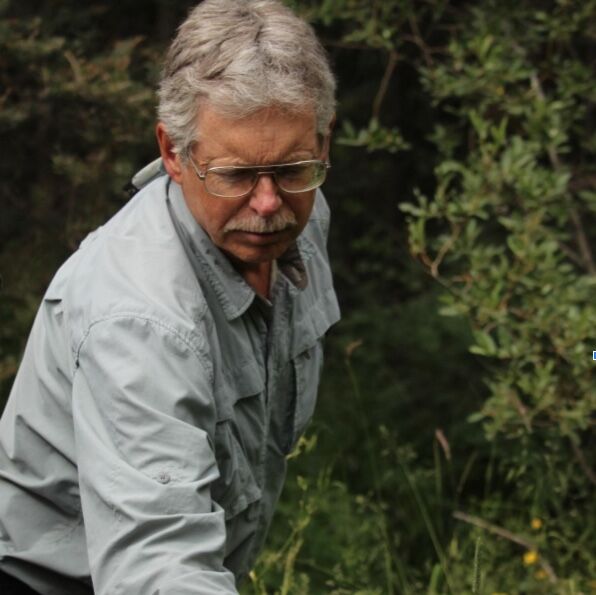Some information may be outdated.
How do landscapes interact with the plant and animal species living on and around them? This week, Science Moab speaks with Larry Stevens, an evolutionary ecologist and curator of ecology at the Museum of Northern Arizona, about the biogeography of the Grand Canyon. We discuss the canyon’s influence on plant and animal distribution, and how different geographic features converge to impact these species’ evolution.
Science Moab: What is biogeography?
Stevens: Biogeography is the study of the distribution of life. It’s spatial; it asks how life is distributed in and around mountains, for example, and across continents. Biogeography also has a lot of evolutionary components, because oftentimes the distribution of life is very much regulated by the evolutionary process.
Science Moab: What made you want to study the biogeography of caves and canyons?
Stevens: There are many textbooks and entire journals devoted to biogeography, but I couldn’t find any reference to how large, deep canyons affected the distribution of life. I spent a lot of time in the Grand Canyon, so it became a pretty obvious question: how does that canyon shape the distribution of life in and around it?
Science Moab: What did you discover?
Stevens: The distribution of life in a canyon like the Grand Canyon is influenced by a broad array of physical factors, as well as recent and geologic time. We get to experience a complex array of environmental gradients when we hike it — temperature changes; the shading on a north-facing slope versus a south-facing slope.
These are important influences on the distribution of plants and animals, which respond to light environments, thermal gradients, and moisture levels. It also influences the evolutionary history of organisms. All those factors control the distribution of an organism in the landscape.
The physical factors that are most obviously important are things like elevation, which controls climate to a large degree here in the Southwest. In canyons, those climatic factors vary in relation to the aspect of a slope. A south-facing slope at high elevation is actually a fairly pleasant environment, as opposed to a north-facing slope. The role of aspect becomes magnified in a deep canyon, where a south-facing slope is really a very different world than a north-facing slope.
Think of the Grand Canyon landscape as this vast mosaic across different elevations undergoing major transitions in habitat structure over the last couple hundred thousand years.
Science Moab: What are the main ways that deep canyons impact species distributions?
Stevens: There are four basic ways that a large, deep canyon can influence the movement and the distribution of life within and around it. The first is as a barrier. That’s pretty profound in the Grand Canyon. The barrier effect works across the canyon as well as upstream and downstream.
There’s also a very strong corridor effect. The lower-elevation part of the Grand Canyon is basically the Sonoran Desert. There’s a whole raft of plant and animal species that cannot live anywhere else in northern Arizona. So there’s a tremendous passage of desert species up from the southern desert. There’s also a corridor effect coming down from Utah; plants can get rafted down through floods. In some cases, these are the lowest elevations for those plant species.
Within the canyon, there are “refugia” — caves and springs where long-term stable conditions allow unique forms to develop that are completely restricted to those specific environments.
So we have a barrier effect, the corridor effect, and the refuge effect. Lastly, there are some species like common ravens, bighorn sheep, and desert mule deer that aren’t really restricted by the canyon. Putting everything together, about 70% of the macro lifeforms in the Grand Canyon are restricted in their distribution in some way by this canyon.
Science Moab: How do these biogeographical impacts of canyons compare with those of mountains?
Stevens: Mountains tend to be least productive at their highest elevations, and more productive down at the bottom where it’s warmest, due to longer growing periods and the presence of water. The flow of energy is off the sides and downslope. While a mountain range is shedding productivity at its highest elevations, the large, deep canyons might be more productive in an inverse way, with greater productivity at the top.
Science Moab is a nonprofit dedicated to engaging community members and visitors with the science happening in Southeast Utah and the Colorado Plateau. To learn more and listen to the rest of Larry Stevens’ interview, visit www.sciencemoab.org/radio. This interview has been edited for clarity.
Appreciate the coverage? Help keep local news alive.
Chip in to support the Moab Sun News.





